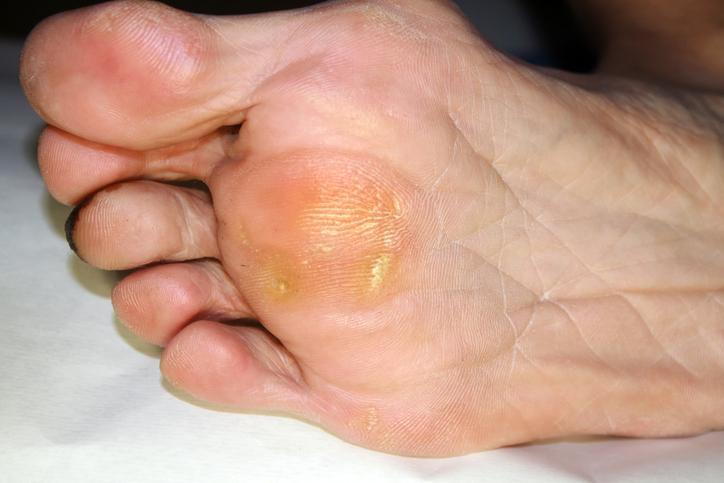Corns 101: What You Should Know
posted: May 16, 2018.

When certain areas of the feet are placed under excessive friction or pressure, foot corns can develop. When your skin experiences increased pressure, the body reacts by producing areas of thickened skin. Although it is a normal process, and our feet can withstand it, it is when the pressure becomes too significant that the symptoms arise.
What is a corn?
A corn is an area of thickened skin on the top of the foot. It forms to protect that particular area from being further irritated. There are hard corns that generally form on the top of the toes, and there are soft corns that frequently form between the toes where there is moisture and warmth.
What causes corns?
Hard corns form when there is excessive friction or pressure. For instance, hard corns can develop when a toe rubs against the inside of a tight shoe. Soft corns, on the other hard, form when there is a calcium deposit or a small spur of bone beneath the lesion itself. Soft corns are also the more painful of the two, and they are prone to infection.
If you have a soft corn that is surrounded by skin discolouration, is painful to touch, and/or has pus or bloody discharge, then you should immediately make an appointment to see our podiatrist, Sheldon H. Nadal, DPM.
How can corns be treated?
If you have hard corns that generally do not hurt or bother you, you can have these left alone and treated by avoiding any further aggravation. For instance, if you notice that the formation of corns develops when you wear a particular pair of shoes, then the best thing to do is to get rid of those shoes – no matter how much you love wearing them.
The treatment of soft corns includes the patient to carefully select the right footwear that will help relieve the pressure being caused by the corns. You may also apply a cotton ball of a pad between the affected toes. This helps relieve the pressure and it also reduces discomfort.
What should I do when home treatment is not enough?
If none of the home treatments reduce the pain and discomfort you feel, and if your daily activities are being impaired, then you should see our podiatrist, Sheldon H. Nadal DPM as soon as possible. He will examine your feet, take X-rays as needed, watch you walk, take your medical history, and determine what the best course of action would be.